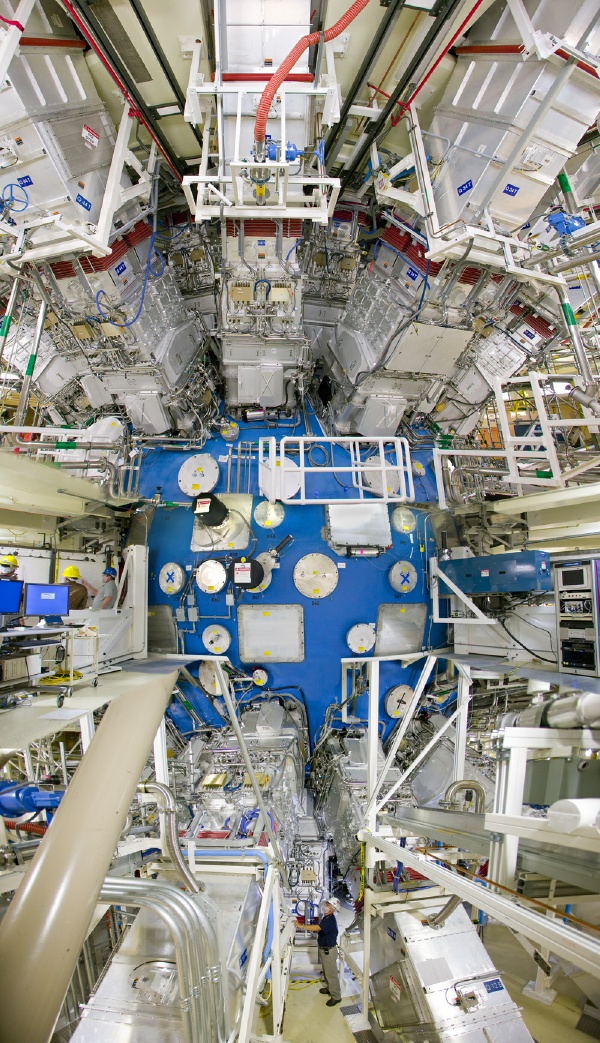You'll think the residents of Alderaan had better start packing suitcases, right?
Housed at the Department of Energy's Lawrence Livermore National Laboratory, the National Ignition Facility (NIF) is also expected to allow scientists to achieve fusion ignition in the laboratory, obtaining more energy from the target than is provided by the laser.
The completion of NIF opens the door to scientific advancement and discovery that promises to enhance our national security, could help break America's dependence on foreign oil, and will lead to new breakthroughs in the worlds of astrophysics, materials science and many other scientific disciplines.
"Completion of the National Ignition Facility is a true milestone that will make America safer and more energy independent by opening new avenues of scientific advancement and discovery," said NNSA Administrator Thomas D'Agostino. "NIF will be a cornerstone of a critical national security mission, ensuring the continuing reliability of the U.S. nuclear stockpile without underground nuclear testing, while also providing a path to explore the frontiers of basic science, and potential technologies for energy independence."
NIF is a critical part of NNSA's mission of maintaining the safety and reliability of our nuclear deterrent without conducting nuclear testing. The United States has not deployed a new nuclear weapon in over 20 years, nor conducted an underground nuclear test since 1992.
Instead, scientists at the NNSA maintain the warheads in the stockpile well beyond their original life by using sophisticated supercomputers and facilities that test the safety, security and reliability of U.S. weapons in NNSA laboratories.
With NIF, scientists will be able to evaluate key scientific assumptions in current computer models, obtain previously unavailable data on how materials behave at temperatures and pressures like those in the center of a star, and help validate NNSA's supercomputer simulations by comparing code predictions against observations from laboratory experiments.

Composite photo shows all three floors containing the 264,000-pound, 10-meter diameter target chamber. Diagnostic instruments will be attached to the round hatches. Photo montage by Jacqueline McBride
Because of its groundbreaking advance in technology, NIF also has the potential to produce breakthroughs in fields beyond national security. It may help advance fusion energy technology, which could be an element of making the United States energy independent. It could also help scientists better understand the makeup of stars It could also help scientists better understand the makeup of stars and giant planets both within and outside our solar system.
NIF has already produced historic scientific advances. Earlier this month, NIF became the first fusion laser in the world to break the megajoule barrier (a megajoule is the energy consumed by 10,000 100-watt light bulbs in one second) by delivering 1.1 million joules of ultraviolet energy to the center of its target chamber - more than 25 times more energy than the previous record-holder.
Established by Congress in 2000, NNSA is a separately organized agency within the U.S. Department of Energy responsible for enhancing national security through the military application of nuclear science. NNSA maintains and enhances the safety, security, reliability and performance of the U.S. nuclear weapons stockpile without nuclear testing; works to reduce global danger from weapons of mass destruction; provides the U.S. Navy with safe and effective nuclear propulsion; and responds to nuclear and radiological emergencies in the United States and abroad.
Founded in 1952, Lawrence Livermore National Laboratory has a mission to ensure national security and to apply science and technology to the important issues of our time. Lawrence Livermore National Laboratory is managed by Lawrence Livermore National Security, LLC, for the U.S. Department of Energy’s National Nuclear Security.




Comments